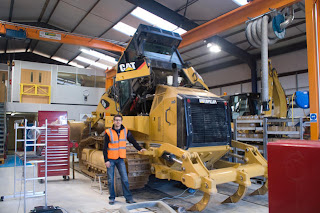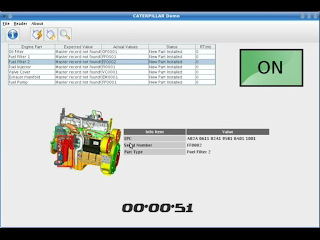be compared with the information stored in the master tag. When a part is replaced, a discrepancy would be detected and the operator would be warned. A history of replaced parts would also be stored on the master tag. By means of this mechanism, we expect for vehicle maintainers to be able to know when parts have been replaced and how long the operation of a certain part has been. This mechanism is aimed to replace the current manual practices that are prone to human error and inaccurate information. Furthermore, even if the engine block is replaced, we still carry the information on the master tag, wherever that engine goes. That can help end-of-life part management. For example, we can know exactly which parts can be reused and which ones should be disposed.
To demonstrate these ideas, I helped to develop a software that simulates the engine start and then reads parts and mater tag. It then compares the information and warns the user about new parts installed, removed or replaced. It also updates the engine master tag. We then had a one-day field trip to a CAT research and development site nearby Cambridge (UK). There we installed tags and readers and tested the software in a real CAT tractor.


I must say that the trickiest part of all was to program the master tag update, because the tags we were using didn't have much memory to play around with.
